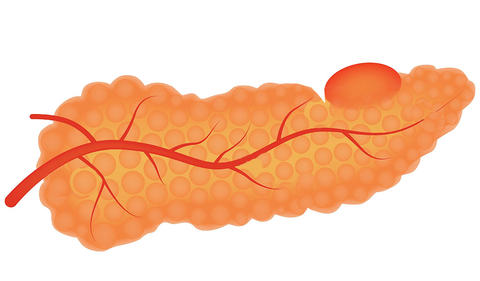Risk factors for pancreatic cancer related to intraductal papillary mucinous neoplasms (IPMN) without high-risk stigmata
Hamada T et al, Gut. 2025;74(6):971-982
In a large prospective cohort study, IPMN size and its growth rate predict future pancreatic carcinoma risk only during the first 5 years of follow-up. Main pancreatic duct diameter at 5 years may identify patients who still harbor a high risk for pancreatic carcinoma.
Background: Cyst size, its growth rate, and diameter of the main pancreatic duct (MPD) are all associated with pancreatic carcinoma prevalence in intraductal papillary mucinous neoplasms (IPMNs).

Objective: To examine the above factors in relation to future risk of incident pancreatic carcinoma in individuals with IPMNs harbouring no high-risk stigmata.
Design: In a prospective longitudinal cohort, the authors analysed 2549 patients with IPMNs. A multivariable cause-specific Cox proportional hazards regression model was built to estimate HRs for incident pancreatic carcinoma.
Results: IPMN size at baseline and its annual growth rate over 2 years of follow-up were associated with incident pancreatic carcinoma (ptrend < 0.001). The multivariable cause-specific HR per 10 mm increase in IPMN size was 1.28 (95% confidence interval [CI]: 1.10–1.50). The annual growth rates of 1.5–2.4 mm/year and ≥ 2.5 mm/year over 2 years were associated with multivariable cause-specific HRs of 1.91 (95% CI: 0.78–4.67) and 4.52 (95% CI: 2.28–8.98), respectively (vs < 1.5 mm/year). Neither IPMN size at 5 years nor its maximum growth rate during 5 years was associated with incident pancreatic carcinoma (ptrend > 0.07). MPD diameter at 5 years was associated with incident pancreatic carcinoma (multivariable cause-specific HR per 2 mm increase, 2.12; 95% CI: 1.72–2.63). A predictive nomogram was generated for calculating the risk of incident pancreatic carcinoma.
Conclusions: IPMN size and its growth rate predict future pancreatic carcinoma risk only during first 5 years of follow-up. MPD diameter at 5 years may identify patients who still harbour a high risk for pancreatic carcinoma.